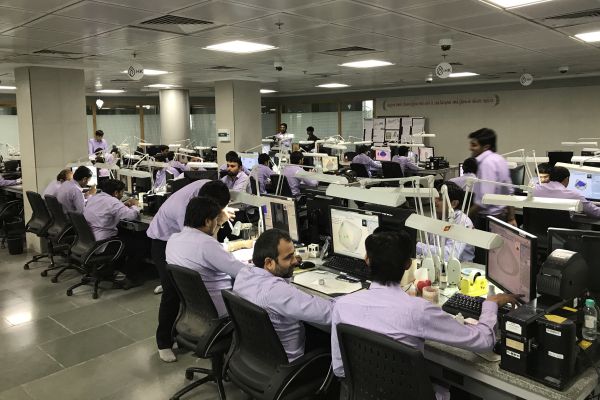|
|
Four Major Changes in 25 Years of Hari Krishna
Aug 15, 2017 3:00 AM
By Joshua Freedman
|
|
|

RAPAPORT... Hari Krishna Exports (HKE) has come a long way over the last
two-and-a-half decades, and its growth reflects that of India’s diamond trade
as a whole. The manufacturer and polished-diamond supplier, which celebrates its
25th anniversary this year, has gone from having a handful of customers
in 1992 to being one of the largest diamond companies in the world.
Rapaport News recently caught up with Ghanshyam
Dholakia (pictured), co-founder and managing director of the Surat-based cutting firm, to
find out what has changed in that time.
1. Its revenues have grown 6,000-fold

In 1992, the company brought in INR 10 million per year, or a
little under $400,000. Today, its annual sales total about INR 60 billion, or
close to $1 billion. It started with eight to 10 employees and now has more
than 6,000, including 5,000 in Surat — the main cutting center — and 1,000 in
Mumbai, where its sales and marketing operations are based, Dholakia said. HKE claims
more than 2,000 customers, of which 75% give the firm repeat business.
2. Business is far more international
While HKE has had clients from outside India since its
founding — original customers include the Israel-based Rony Duek Diamonds and Antwerp’s
Rosy Blue — the company has expanded such that it now exports to 49 countries.
HKE only started working with US customers in 1996, according to Dholakia, when
an unplanned encounter with an American contact outside Mumbai’s opera house —
the city’s old diamond trading hub — led to a flurry of further business. The
US now accounts for about 40% of HKE’s sales by value, Dholakia said. The
company’s second-largest market is China and Hong Kong, representing 25% of
revenue.
3. Round is still brilliant, but now only part of the
story
When HKE started, the market was mainly focused on round
polished diamonds, the managing director explained. Round remains the most
popular, but today the company supplies 10 shapes.
4. Competition is stronger than ever, and speed matters
In the beginning, it took about 75 days to produce a finished, polished diamond, starting from when the rough entered HKE’s factory. Now the company completes the process in 30 to 40 days, Dholakia said.
That’s partly down to better technology and good management, but the sheer
number of other firms vying for the same business has also forced the company
to improve its service.
“Competition was not that high [in 1992],” the veteran
explained. “Now competition is quite high — that’s why we need a fast cycle.”
|
|
|
|
|
|
|
|
|
|
Tags:
Ghanshyam Dholakia, Hari Krishna, Hari Krishna Exports, HKE, Joshua Freedman, Manufacturing, mumbai, Polished Diamonds, Rony Duek Diamonds, rosy blue, Surat
|
|
|
|
|
|
|
|
|
|
|

|
|